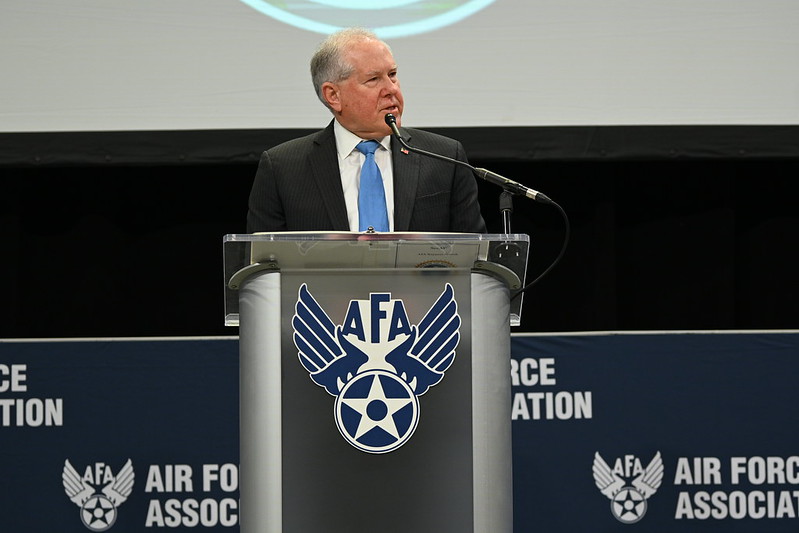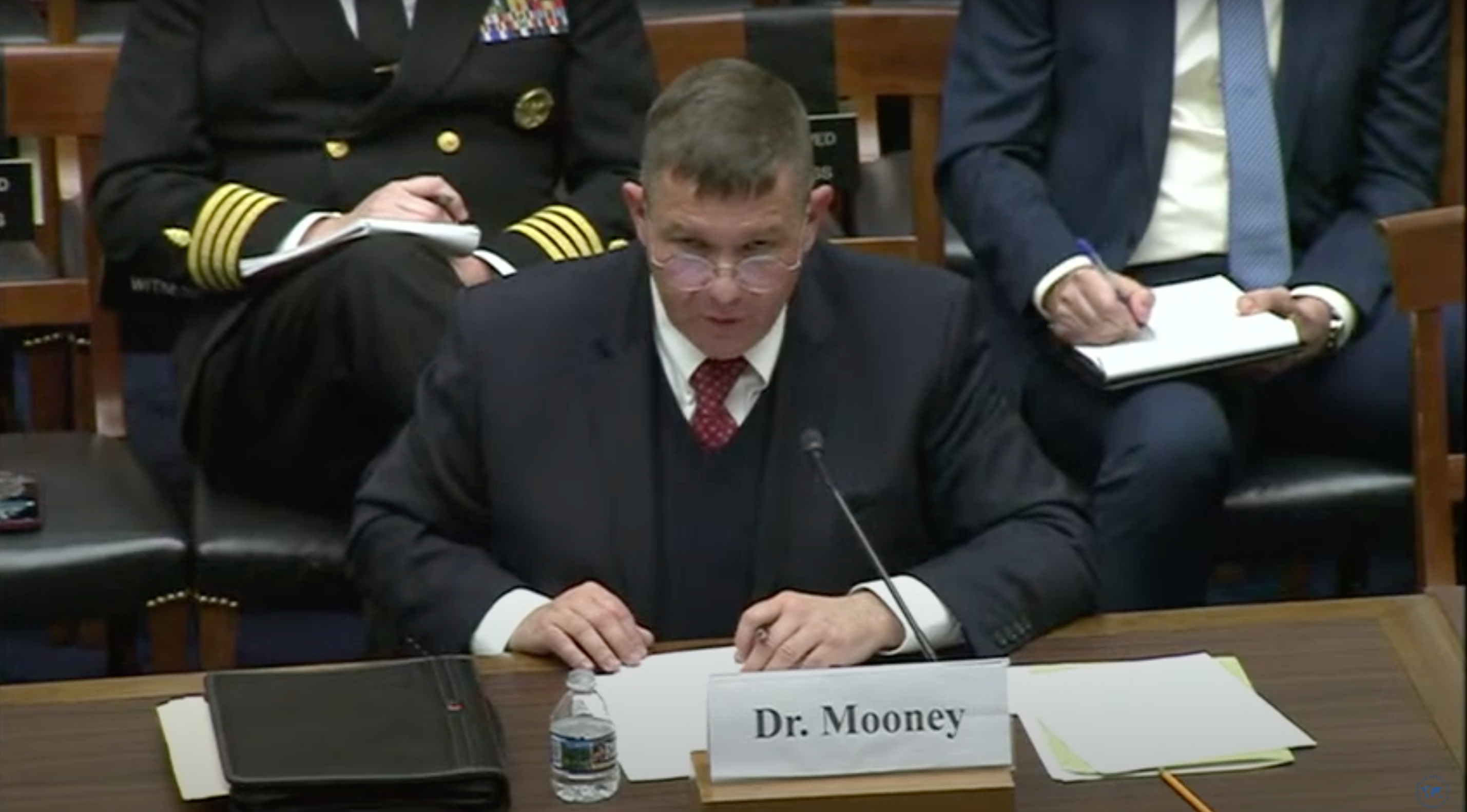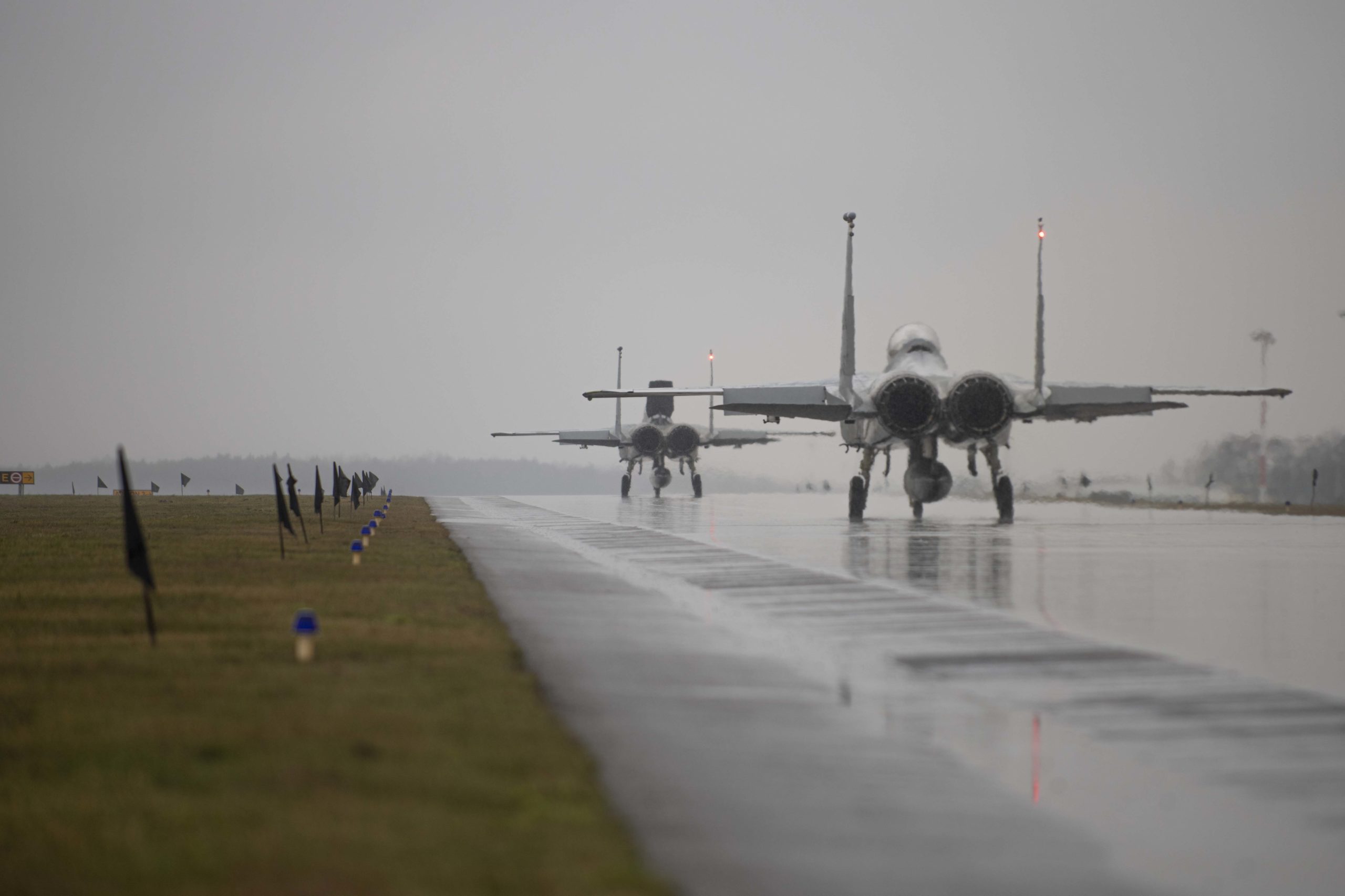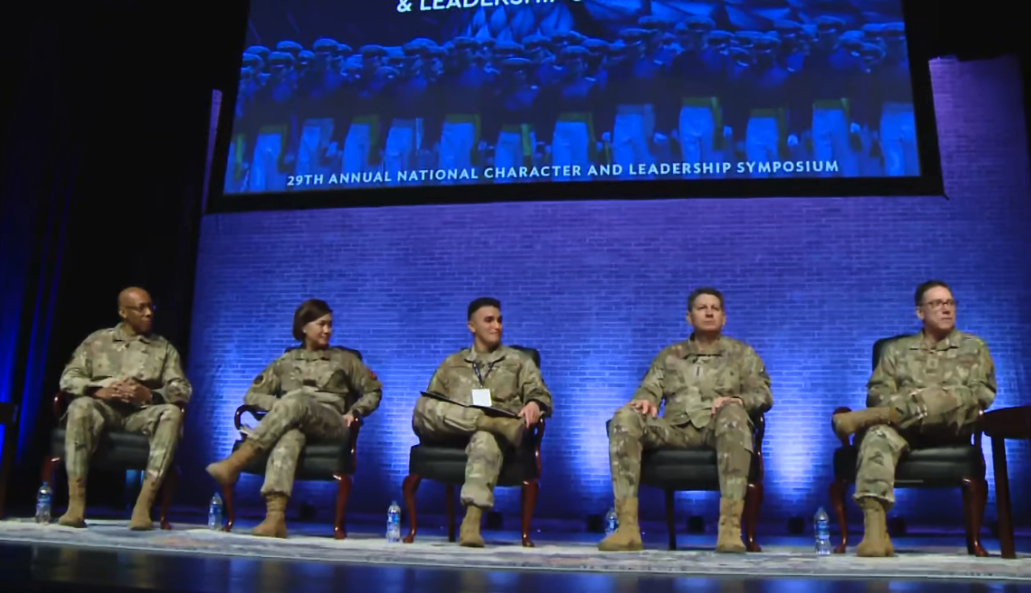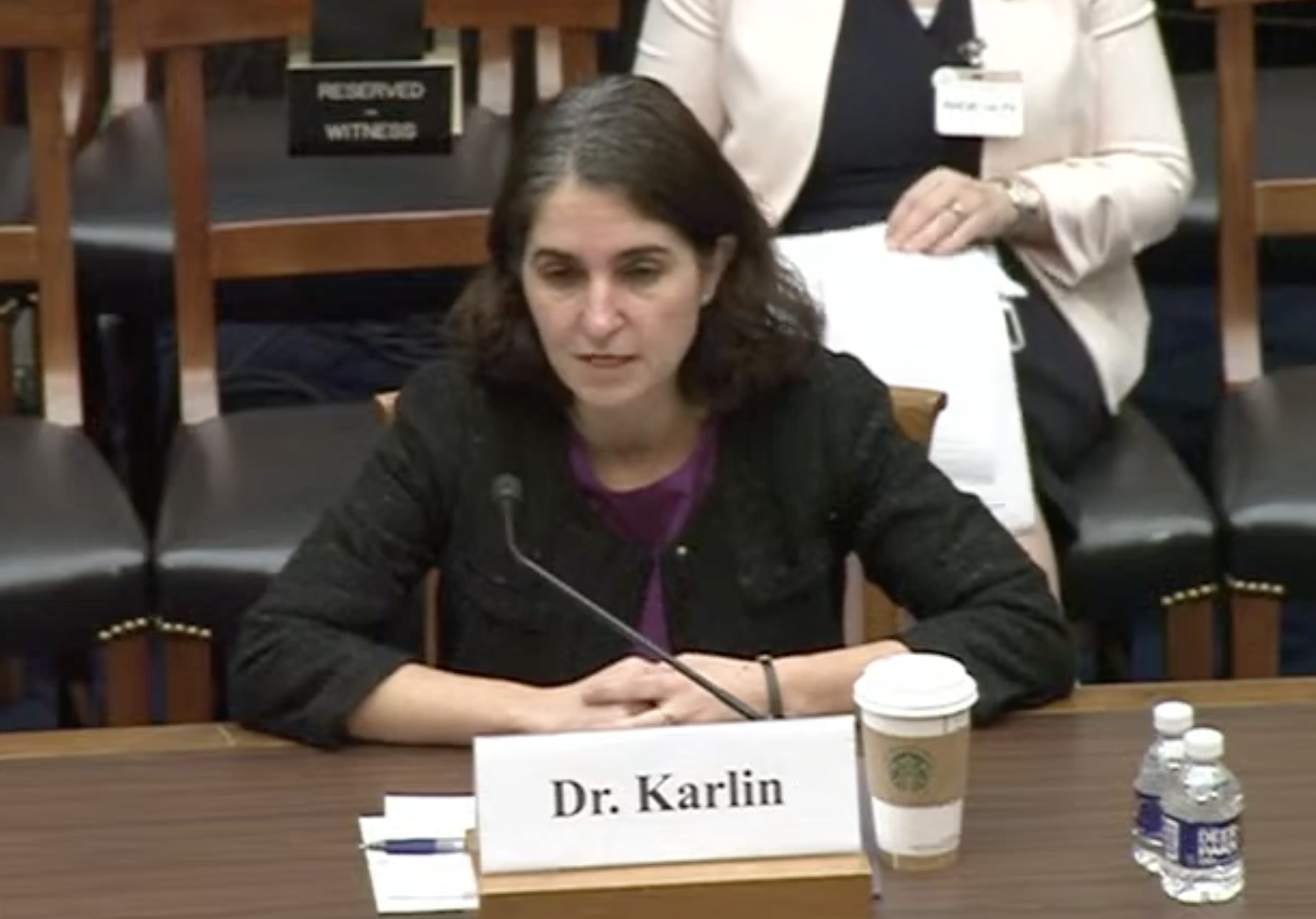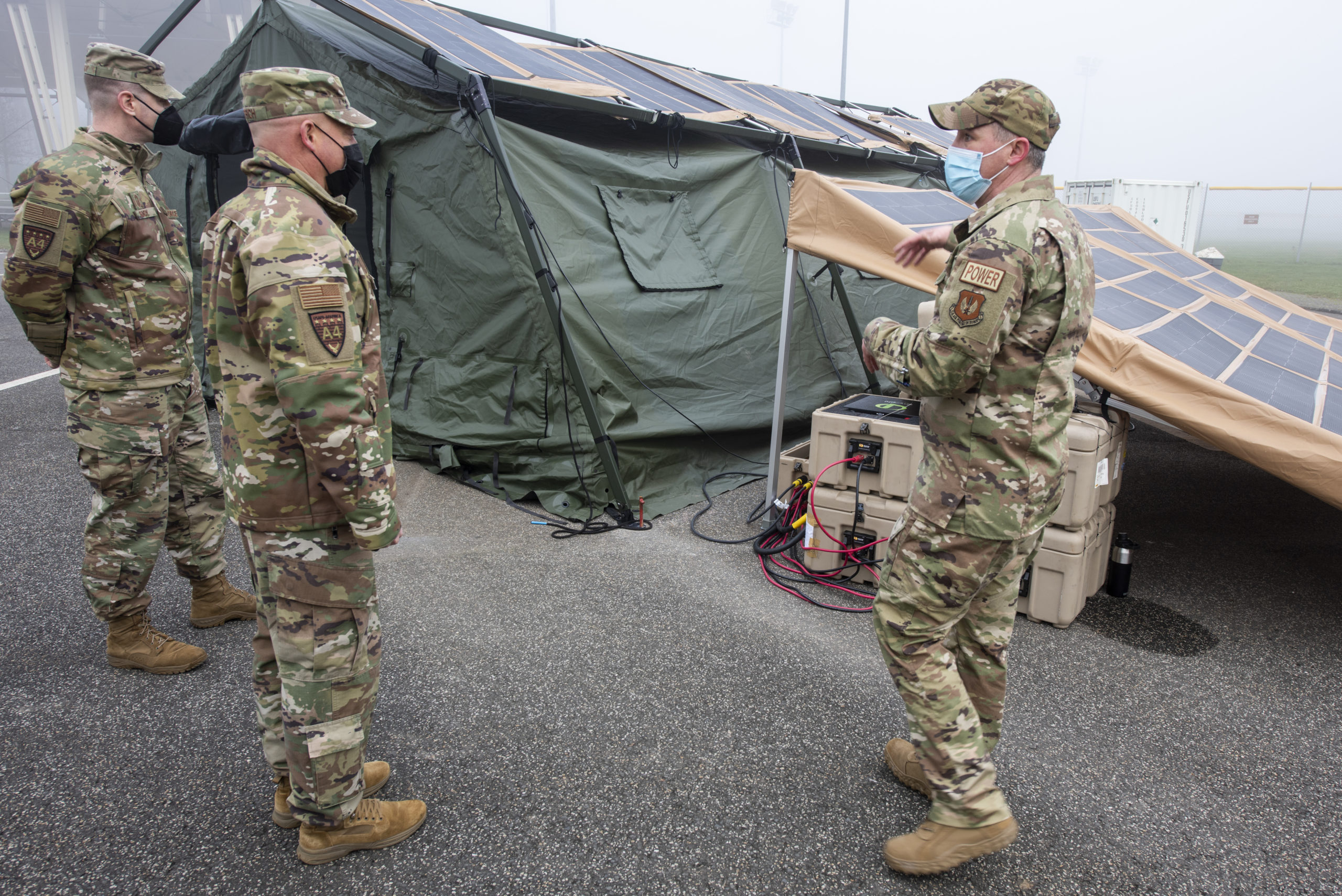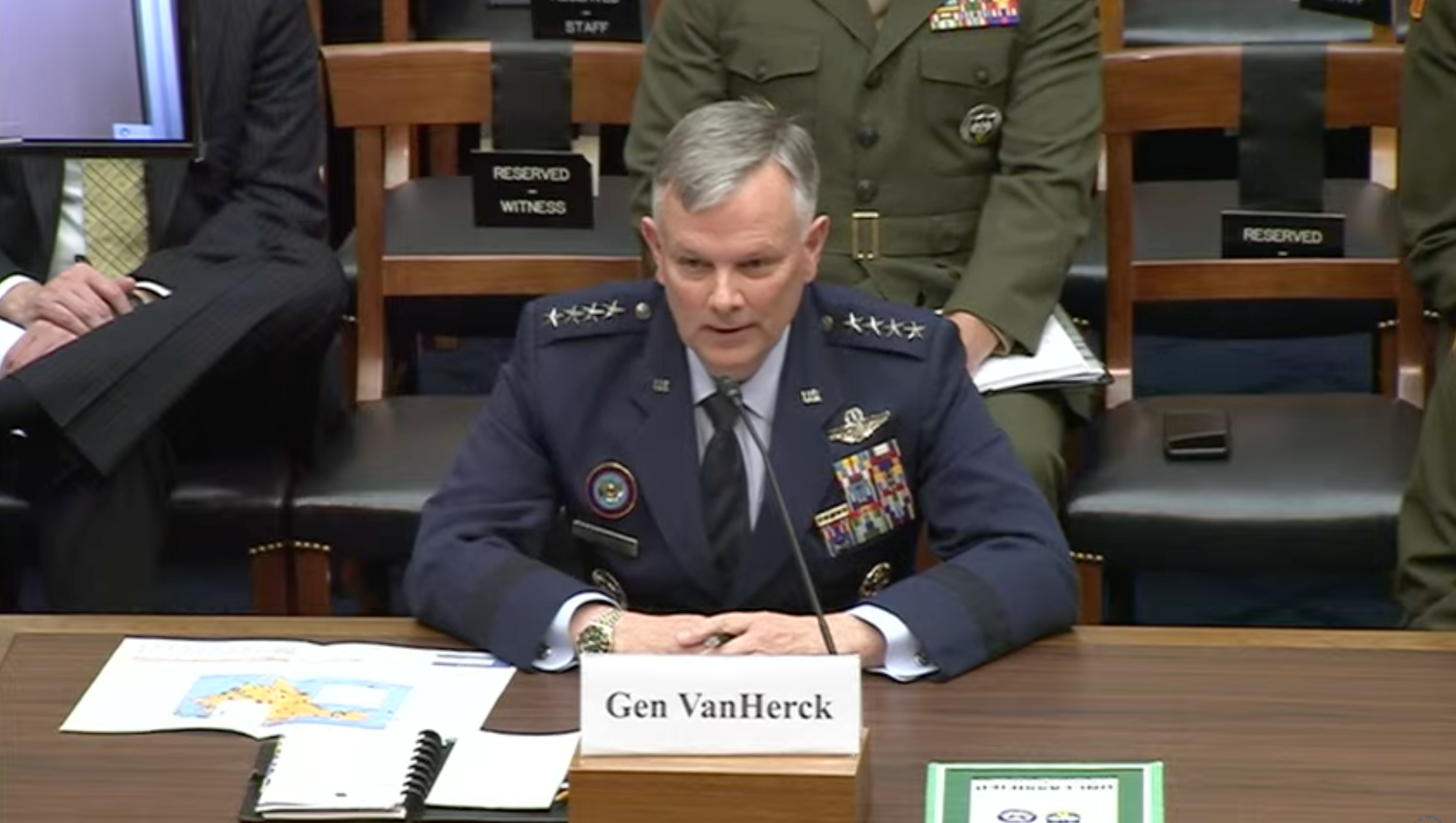The Air Force is closely monitoring the unfolding war in Ukraine and is committed to deterring—and defeating—further Russian aggression, but the forthcoming National Defense Strategy will maintain that despite the current threat environment, the pacing threat is still China, Air Force Secretary Frank Kendall said March 3.
Kicking off the AFA Warfare Symposium in Orlando, Fla., Kendall touted the resiliency of Airmen and Guardians who have weathered a tumultuous two years and “never stopped working,” but he also lamented the department’s aging aircraft, which now average 30 years old, and said that despite recent pushes to improve operational capability rates, they remain too low.
The Air Force is “stretched thin” as it tries to meet “combatant commander needs around the globe,” Kendall said. And, though he appreciates the funding Congress has provided, the Air Force must finally be able to shed some legacy equipment so it can properly invest in the technology of the future, he added.
“We’re not flying and training enough, sacrificing in part a significant historical advantage of superior flying experience for our pilots and aircrews,” Kendall said. “We’re carrying the costs of a roughly 20 percent excess capacity of real estate. We have a significant number of programs in the Air Force that are not fully funded beyond the budget year. We have a Space Force that inherited a set of systems designed for an era when we could operate in space with impunity.
“Overall, we start more programs than we can afford, and we don’t prioritize the most promising ones early so that we can ensure they cross the valley of death to production and fielding,” Kendall said.
There is an urgent need to modernize to keep up with the pacing threat—“China, China, China,” Kendall emphasized.
To do that, he outlined seven imperatives and encouraged members of the defense industry in attendance to “please pay attention. This is where the DAF will be investing, and this is where we need your expertise, intellectual capacity, and creativity.”
Defining a resilient and effective space order of battle
Kendall acknowledges that of all the imperatives, this is the broadest, but also could have the biggest impact.
“The simple fact is that the U.S. cannot project power successfully unless our space-based services are resilient enough to endure while under attack,” Kendall said. “Equally true, our terrestrial forces, joint and combined, cannot survive and perform their missions if our adversary’s space-based operational support systems, especially targeting systems, are allowed to operate with impunity.”
The department intends to build on efforts already underway by the Space Warfare Analysis Center and the Space Development Agency; and is working closely with the Intelligence Community and “especially, the National Reconnaissance Office.”
Achieving operationally optimized ABMS
The Advanced Battle Management System is the department’s component of the overall joint all-domain command and control effort and is intended to use modern networking and communication capabilities, along with new technologies such as artificial intelligence, to improve how the Air Force collects, analyzes, and shares data.
“But we can’t invest in everything, and we shouldn’t invest in improvements that don’t have clear operational benefit,” Kendall said. “We must be more focused on specific things with measurable value and operational impact.”
Specifically, Kendall said he wants to see a program aimed at modernizing the command, control, and communications battle management systems “more generally.”
“This imperative will finish the job of defining that program,” he said.
Defining the Next Generation Air Dominance system of systems
“On its current trajectory, the tactical air force is not affordable,” Kendall surmised.
The department needs a next-generation manned fighter to be paired with a “much less expensive autonomous uncrewed combat aircraft, employing a distributed, tailorable mix of sensors, weapons, and other mission equipment operating as a team or formation.”
Achieving air and ground moving target identification at scale
Without the ability to timely and efficiently acquire air, ground, and maritime mobile targets—in an “act of violent aggression, such as the one we just saw in Europe or an invasion of Taiwan”—ABMS and JADC2 won’t be worth much, Kendall pointed out.
The DAF’s current inventory of “aging and vulnerable legacy systems” such as the Joint STARS and Airborne Warning and Control System aircraft provide air and ground moving target indication, but ABMS will require “the ability to acquire targets using sensors and systems in a way that allows targeting data to be passed to an operator for engagement,” Kendall said.
“Ideally we’d prefer to do these functions from space, which should be more cost effective as adequate resilience could be provided, but that isn’t the only possibility.”
Defining optimized resilient basing
The Air Force’s dependence on a few forward operating bases hasn’t been lost on competitors, Kendall said.
“China, in particular, has acquired a large number of precision conventional rockets and is working on fielding large numbers of hypersonic weapons, which are even harder to defend against,” he said.
The Air Force’s concept of agile combat employment “is absolutely an important step in the right direction” to “make forces less easily targetable because of their disbursement.”
The B-21 long-range strike family of systems
Although the technologies exist to introduce an unmanned bomber escort, more study is necessary to determine not only a “cost-effective approach” but also the right operational concepts, Kendall said.
“One of the things that people often miss about uncrewed systems is that if you’re going to use an autonomous platform with a crewed system, it has to have the range capability to go as far as the crewed system goes and support that system with a reasonable payload when it gets there,” he said. “We’re looking for systems that cost nominally on the order of at least half as much as the manned systems that we’re talking about for both NGAD and for B-21. Together, with the B-21 and NGAD platforms, uncrewed systems would provide enhanced mission-tailorable levels of capability. They could deliver a range of sensors, payloads, and weapons, or other mission equipment, and they can also be attritable or even sacrificed if doing so conferred a major operational advantage.”
Ready to transition to a wartime posture against a peer competitor
The U.S. has never had to mobilize against the cyber threats it might face against a peer competitor, “or even the kinetic threats we might face,” Kendall said. The department will “analyze the entire mobilization and support ecosystem” and prioritize secure networks as well as transportation, logistics, and troops’ physical security.
“Languishing in never-ending, small-scale experimentation does not get the warfighters what they need, but neither does wasting time and money on dead ends,” Kendall said.
